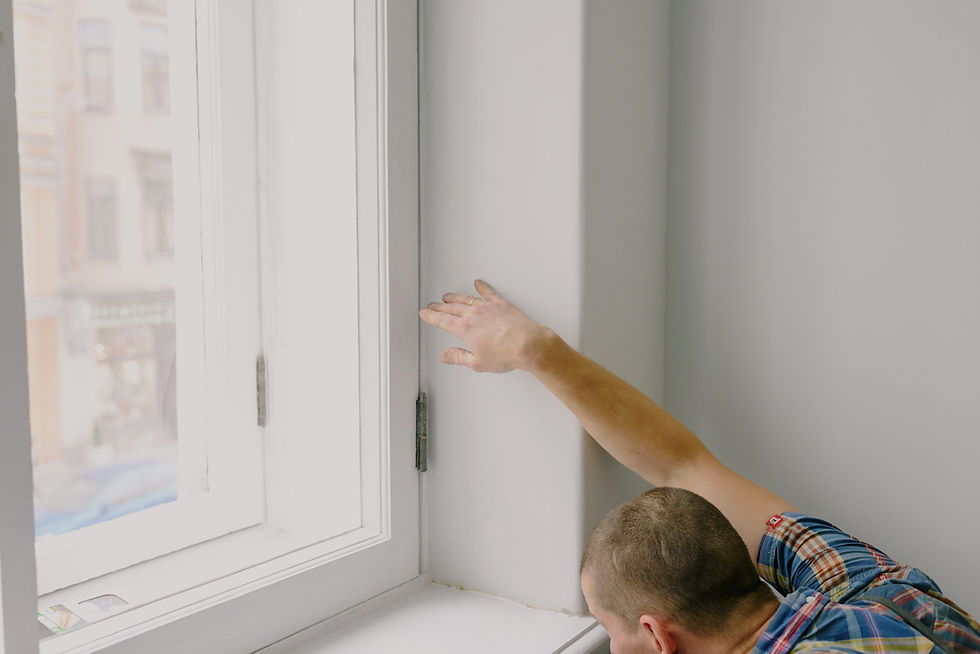The Ultimate Guide to Energy-Efficient Windows
- Carlos Morones

- Aug 22, 2023
- 4 min read
Updated: Aug 21, 2024
In today's world, where environmental concerns are at the forefront of our minds, the quest for energy efficiency has become more crucial than ever. One area where energy efficiency plays a significant role is in the design and construction of windows. Energy-efficient windows offer a multitude of benefits, from reducing energy consumption and utility bills to enhancing indoor comfort and contributing to a greener planet.
Source: energystar.gov
In this comprehensive guide, we'll delve deep into the world of energy-efficient windows, exploring what they are, why they matter, how they work, and the various types available.
Understanding Energy-Efficient Windows: What and Why?
Energy-efficient windows are not just a trend; they are a smart investment for both homeowners and the environment. These windows are designed to minimize the transfer of heat between the interior and exterior of a building, effectively acting as a barrier that keeps the indoor space comfortable year-round.
This is your chance to get your reader excited about the guide and appreciate the real value behind reading the post in its entirety.
Benefits of Energy-Efficient Windows
Reduced Energy Consumption: One of the primary advantages of energy-efficient windows is their ability to lower energy consumption. By preventing heat from escaping during the colder months and blocking heat from entering during the warmer months, these windows reduce the need for excessive heating and cooling, leading to lower energy bills.
Enhanced Comfort: Traditional windows can create uncomfortable drafts and temperature fluctuations. Energy-efficient windows maintain a consistent indoor temperature, eliminating cold spots and drafts, and making your living spaces more comfortable.
Environmental Impact: With the reduction in energy consumption comes a decreased carbon footprint. By using less energy for heating and cooling, you are contributing to the reduction of greenhouse gas emissions, thus helping combat climate change.
Noise Reduction: Energy-efficient windows often come with multiple layers of glass that provide better insulation against outside noise, allowing you to enjoy a quieter and more peaceful indoor environment.
UV Protection: These windows are designed to block a significant portion of harmful UV rays, which can cause fading and damage to furniture, flooring, and artwork over time.

How Do Energy-Efficient Windows Work?
Energy-efficient windows achieve their remarkable performance through innovative design and advanced technologies. Two key components contribute to their efficiency: low-emissivity (Low-E) coatings and multiple glazing.
Low-E Coatings
Low-E coatings are thin, virtually invisible layers of metallic oxide applied to the glass surface. These coatings allow visible light to pass through while reflecting infrared heat. In winter, they prevent indoor heat from escaping through the window, and in summer, they prevent outdoor heat from entering.

Multiple Glazing
Energy-efficient windows often feature multiple layers of glass separated by a spacer. This creates an insulating air or gas layer between the panes, reducing heat transfer. The space between the panes can be filled with gases like argon or krypton, which have higher insulatinoperties than regular air.
Types of Energy-Efficient Windows
Double-Pane Windows: These windows consist of two layers of glass with a space in between, filled with air or gas. They provide a significant improvement in energy efficiency compared to single-pane windows.
Triple-Pane Windows: Similar to double-pane windows, triple-pane windows have an additional layer of glass, providing even better insulation. They are ideal for regions with extreme weather conditions.
Gas-Filled Windows: As mentioned earlier, some energy-efficient windows have inert gases like argon or krypton between the panes. These gases have higher density than air, reducing heat transfer and improving insulation.
Spectrally Selective Coatings: These advanced coatings allow visible light to pass through while blocking certain wavelengths of ultraviolet and infrared light. This helps in maintaining a comfortable indoor temperature.
Frame Materials: The frame of an energy-efficient window also plays a crucial role. Materials like vinyl, fiberglass, and wood composites offer better insulation than traditional aluminum frames.
The Decision-Making Process
Choosing the right energy-efficient windows for your home involves several factors:
Climate: Consider the climate in your region. If you live in a colder climate, triple-pane windows might be more suitable, while double-pane windows may be sufficient in milder climates.
U-Factor and Solar Heat Gain Coefficient (SHGC): These values indicate the window's insulation and heat-blocking properties. A lower U-factor and SHGC indicate better energy efficiency.
Frame Material: Each frame material has its advantages. Wood frames offer excellent insulation but require more maintenance, while vinyl frames are low-maintenance but may not be as insulating as wood.
Budget: Energy-efficient windows are an investment, so consider your budget and the potential long-term savings on energy bills. Interested in how much energy efficient windows could be saving you?
Factor | Consideration |
Climate | Choose windows that suit your climate - double-pane or triple-pane based on temperature extremes. |
U-Factor and SHGC | Opt for lower values to ensure better insulation and heat blocking. |
Frame Material | Decide between wood, vinyl, or other materials based on insulation needs and maintenance preferences. |
Budget | Balance the initial investment with long-term energy savings. |
Conclusion
Energy-efficient windows are a cornerstone of sustainable and comfortable living. By understanding their benefits, mechanisms, and types, you can make an informed decision that aligns with your needs and values. Whether you're seeking to reduce your carbon footprint, lower energy bills, or enhance indoor comfort, energy-efficient windows offer a solution that contributes to a greener future while improving the quality of your life.
Thank you for taking the time to explore the world of energy-efficient windows and their advantages.
Contact Horizon Home Heroes Today!
Looking to replace your existing windows with energy-efficient options? Look no further than Horizon Home Heroes. Our team of experts is dedicated to helping you make the best choices for your home's energy efficiency needs. Contact us today at (951) 600 0020 to schedule a consultation and take the first step towards a more comfortable, sustainable, and cost-effective living space.





Comments